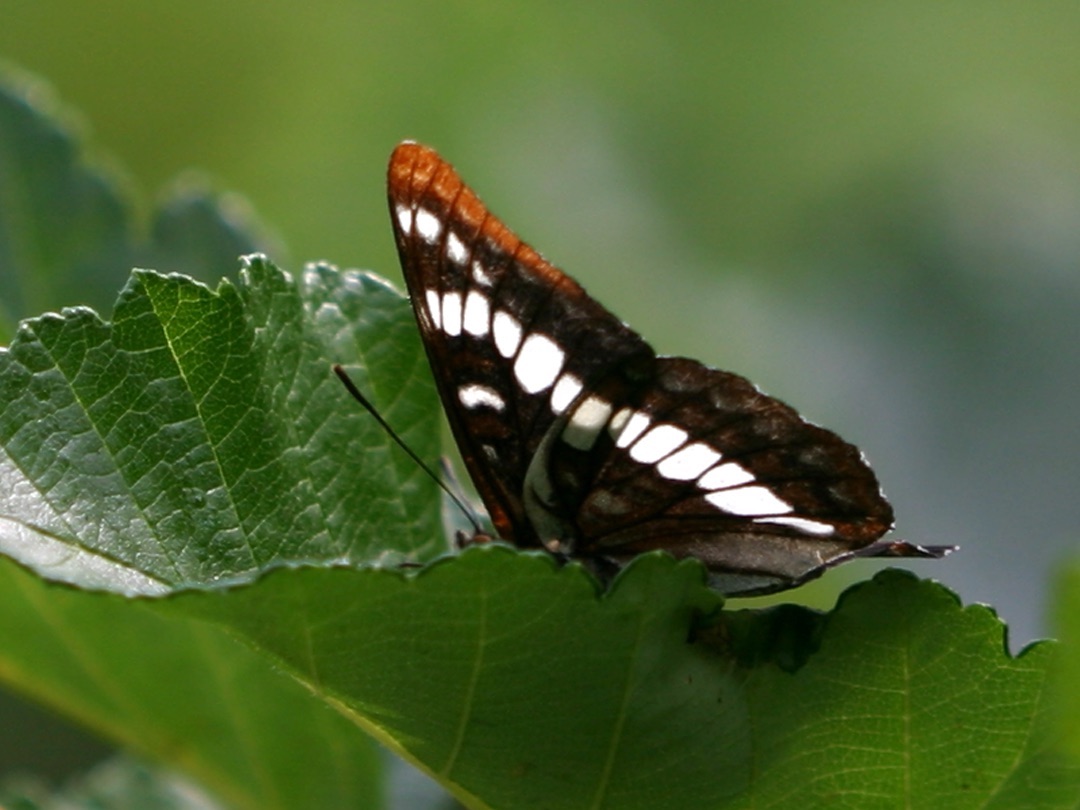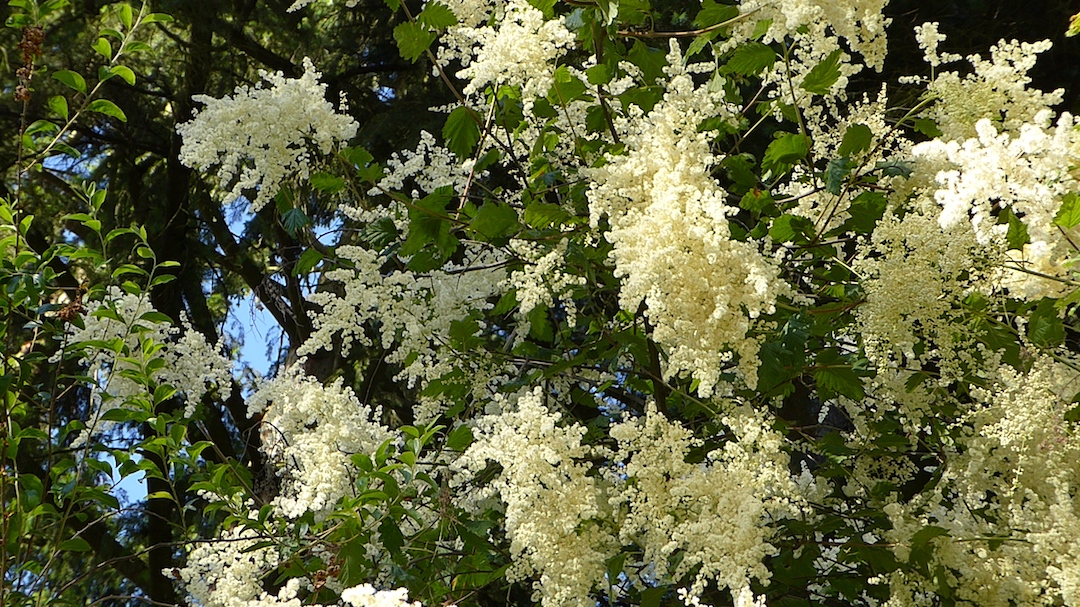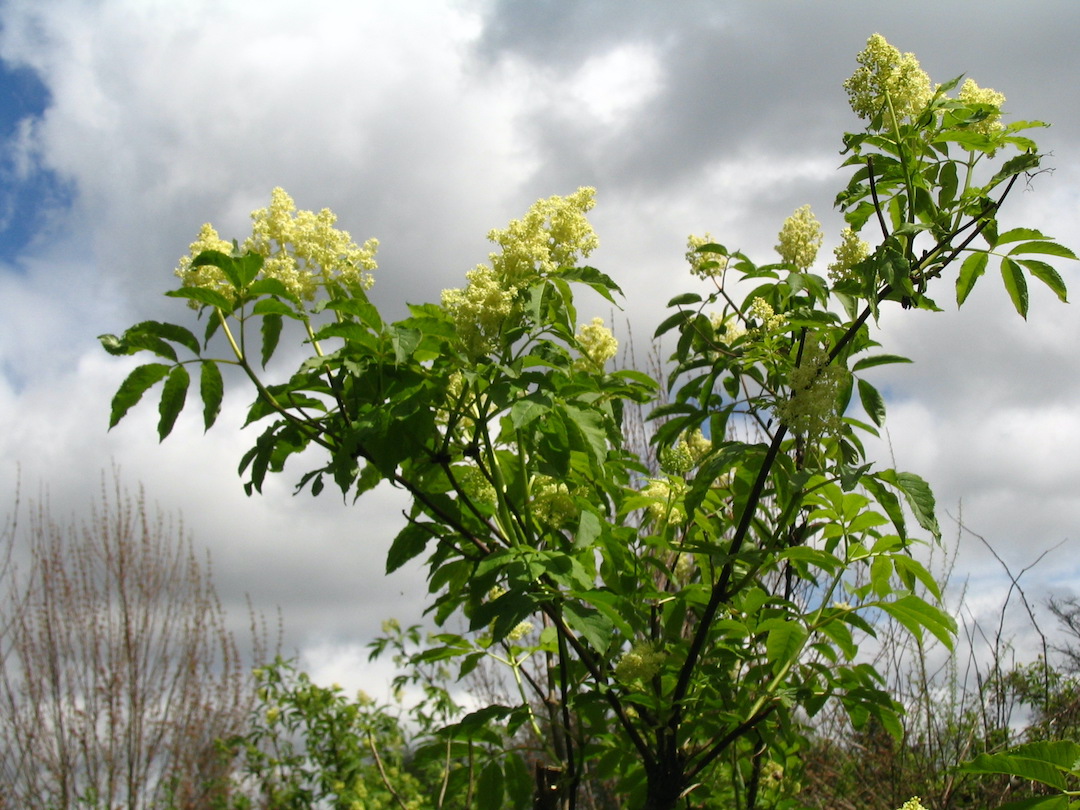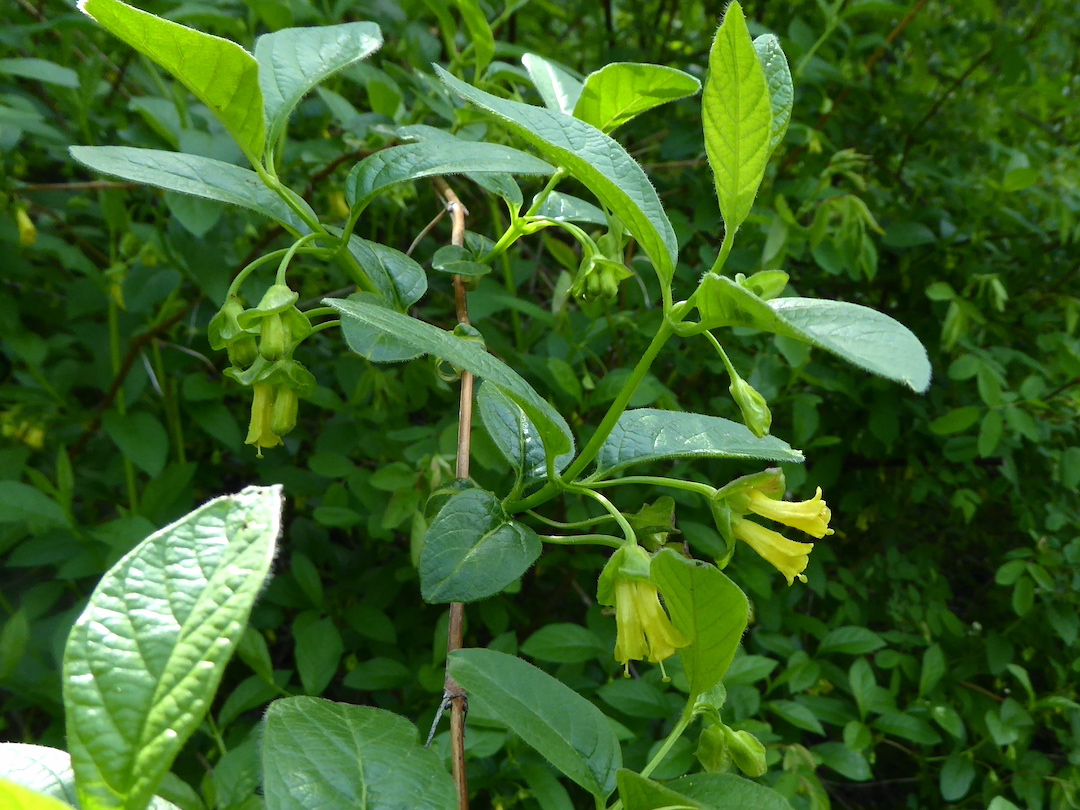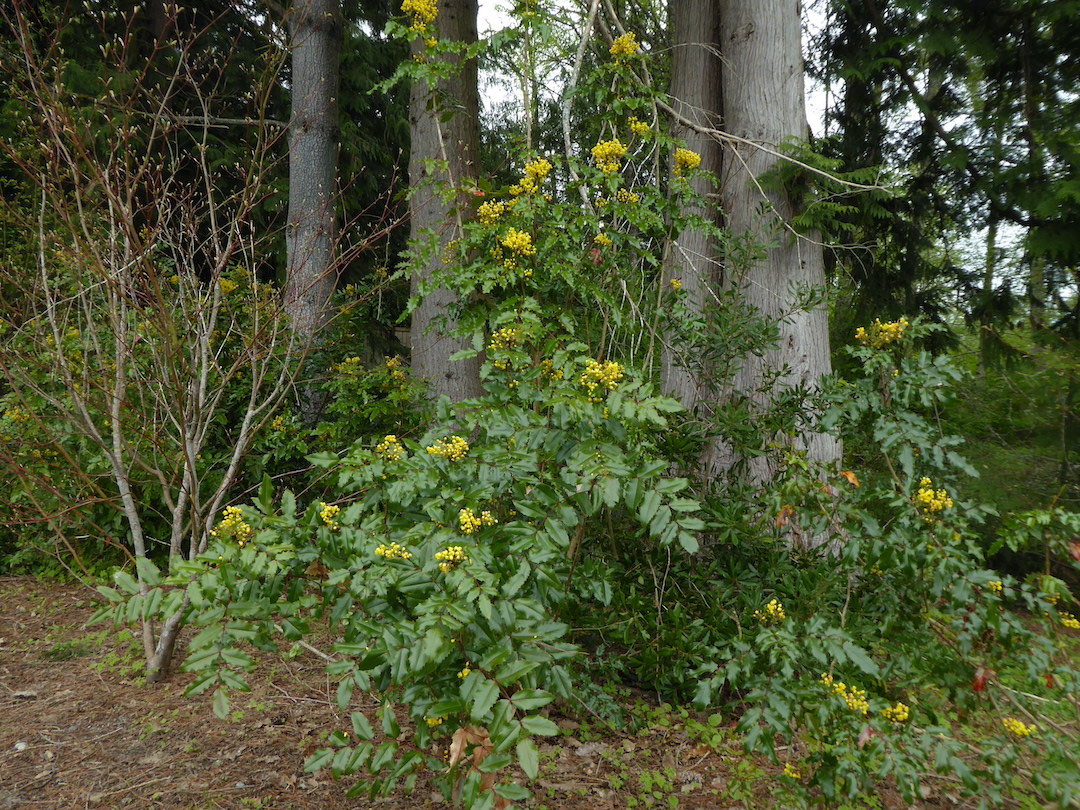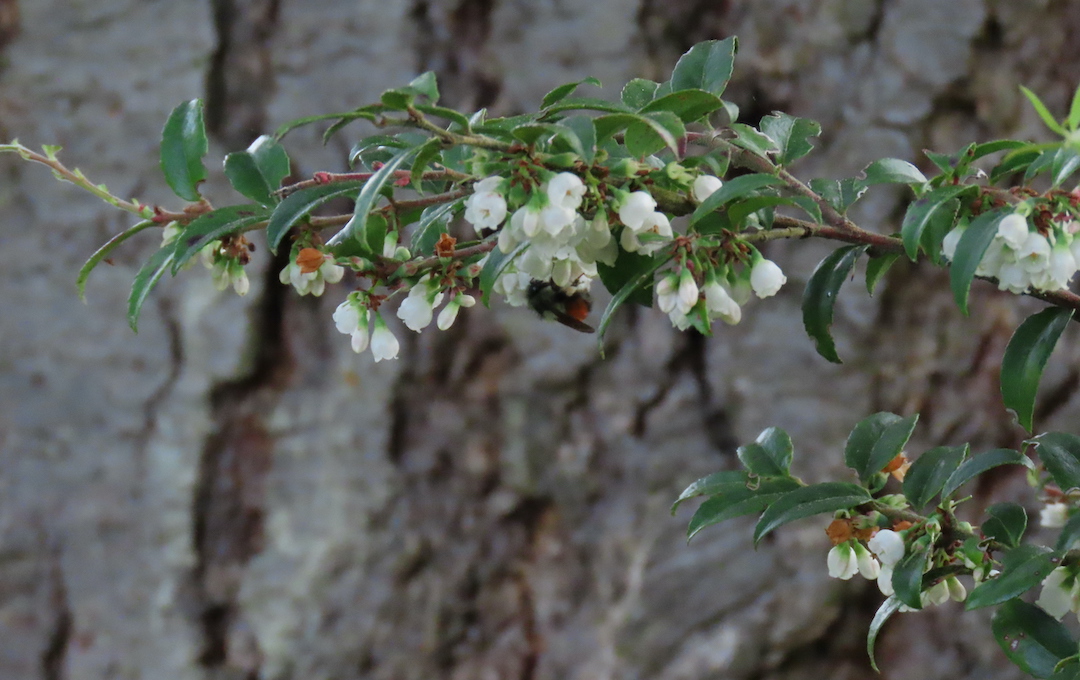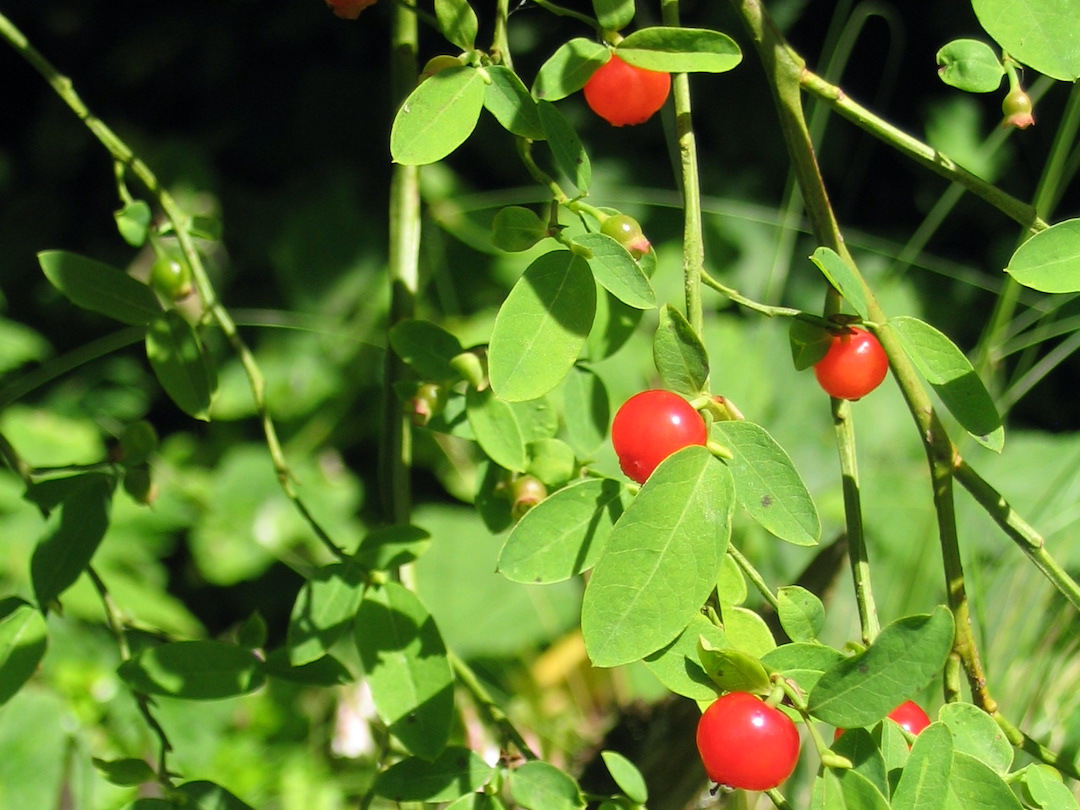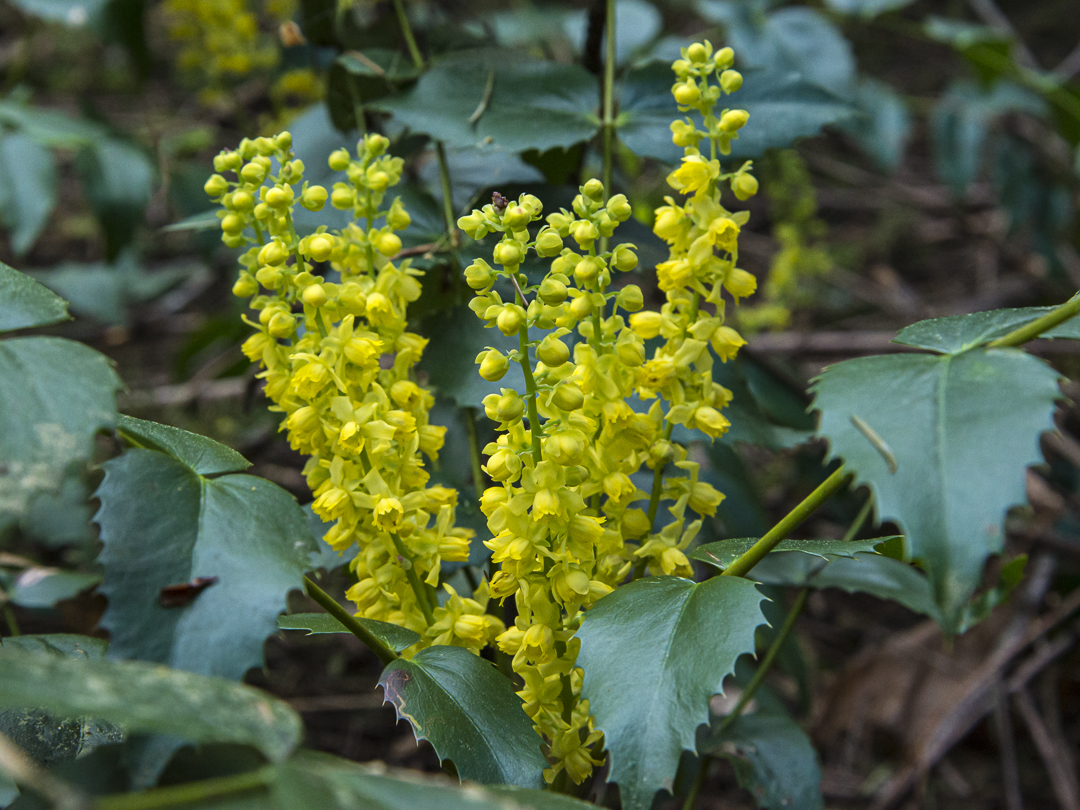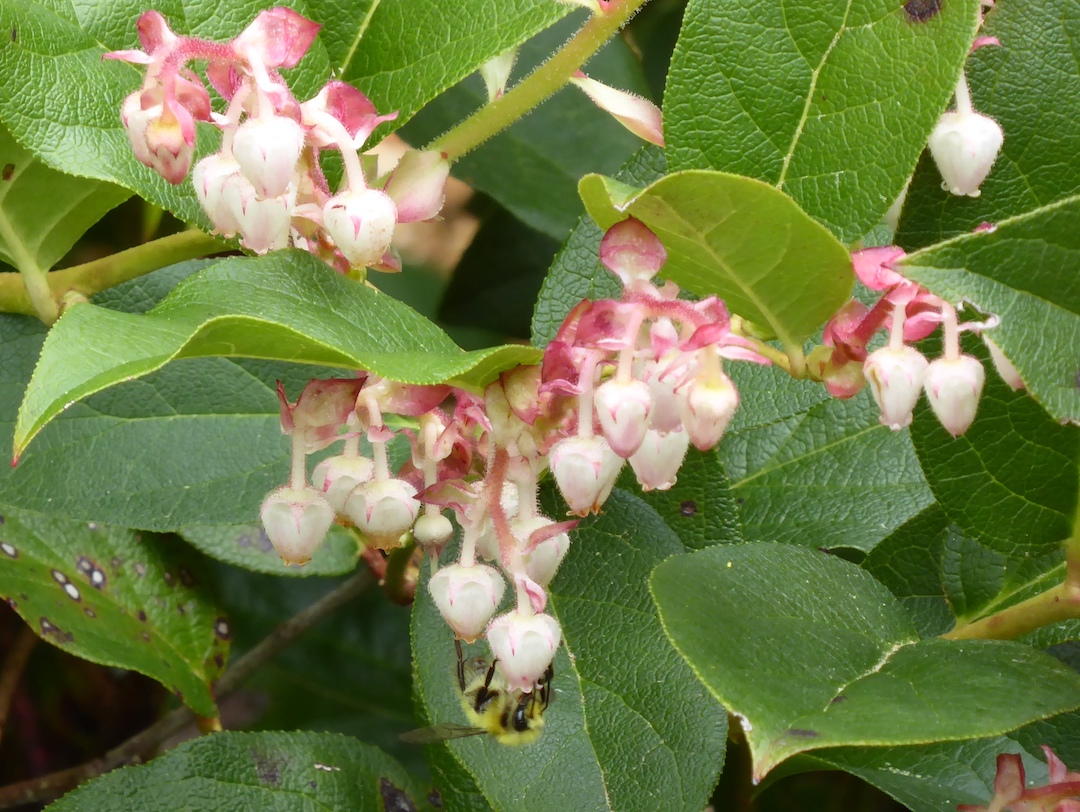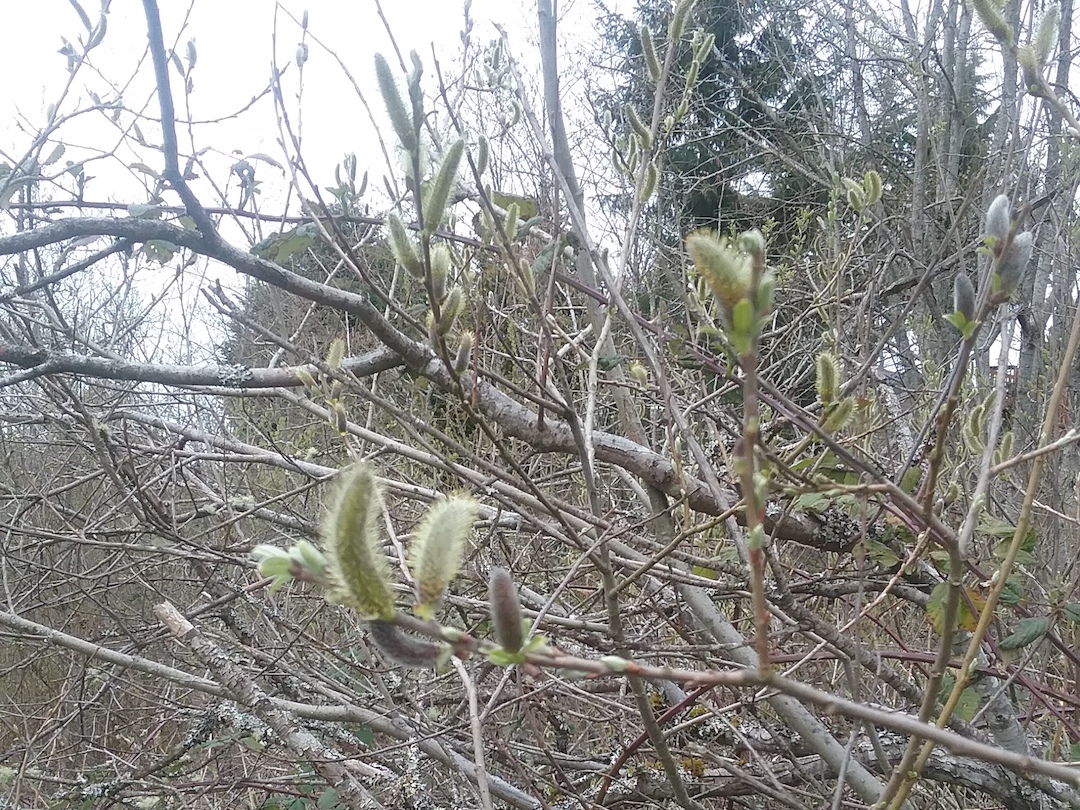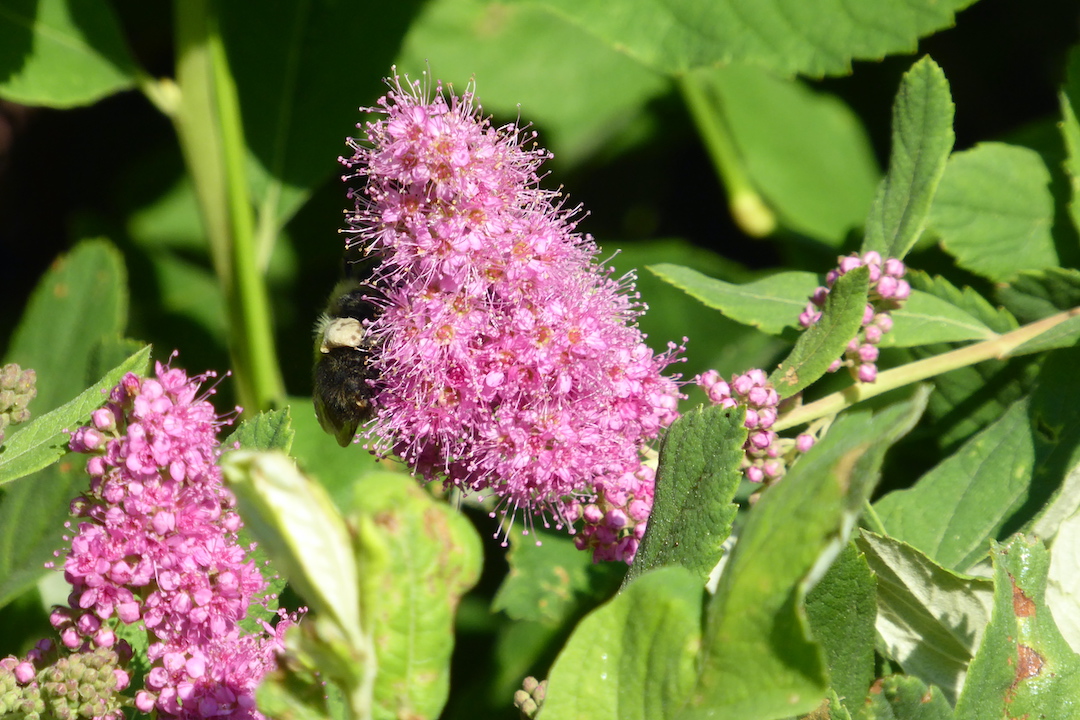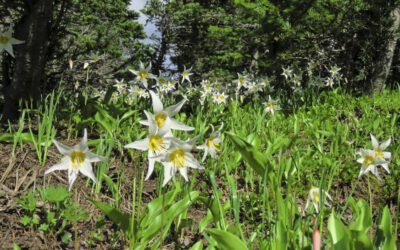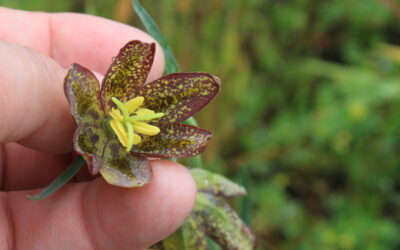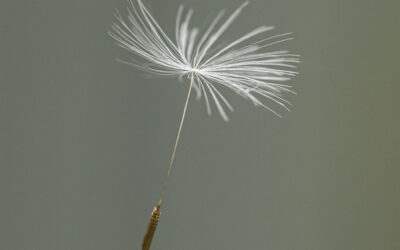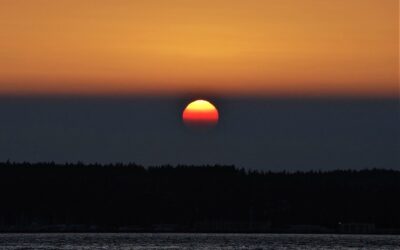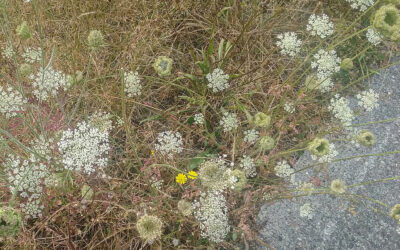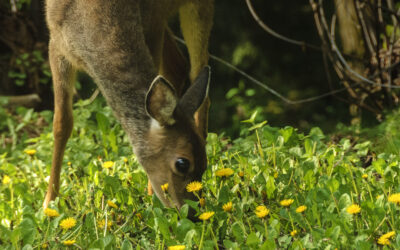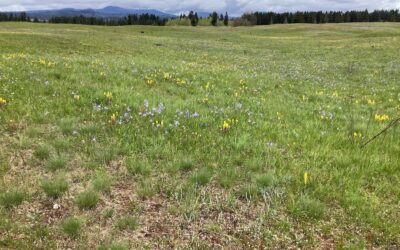NATIVE FLOWERING SHRUBS
By Julie O’Donald, Autumn 2022
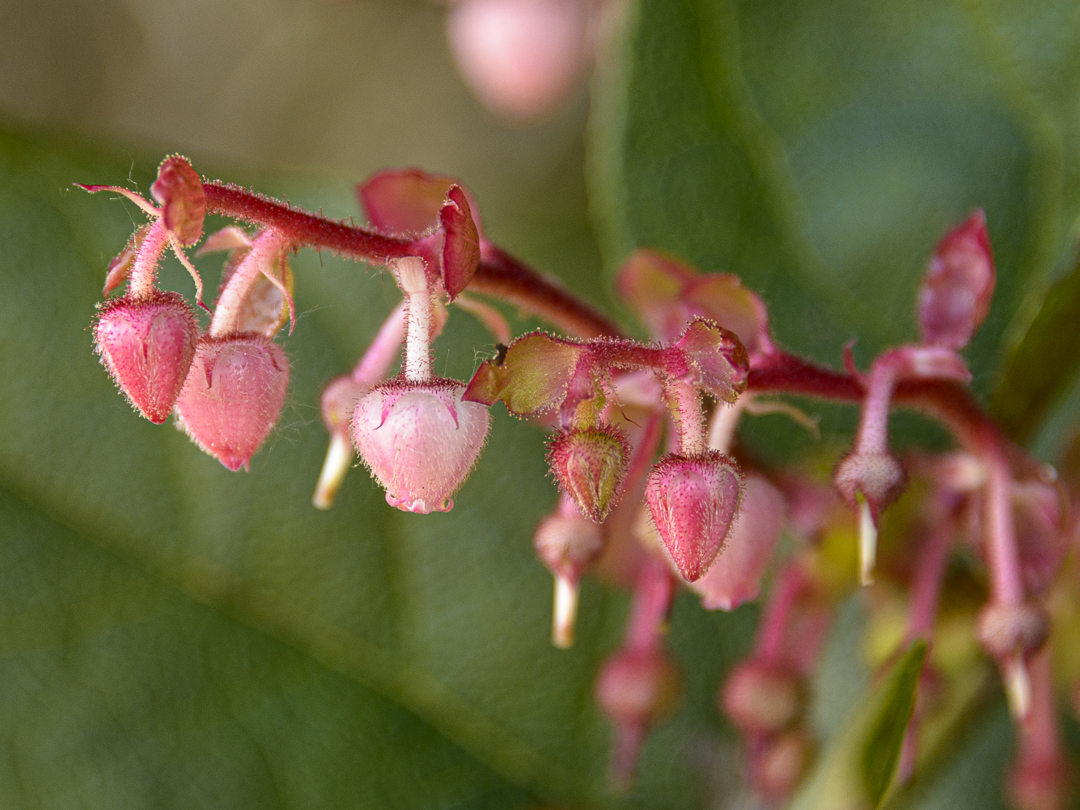
Flowering salal. photo by John F. Williams
NATIVE FLOWERING SHRUBS
By Julie O’Donald, Autumn 2022
When it comes to wildflowers, native shrubs aren’t the first thing most people think of, yet nature’s gardens include an abundance of flowering shrubs at the right time of year to feed emerging native bees.
Native plants have co-evolved together with local birds, wildlife, and beneficial insects. Moth and butterfly caterpillars are reliant on specific native plants. In order to see butterflies on the wing, the caterpillar host plants must be nearby. Caterpillars (larvae) are the immature stage of a four-part life cycle and often require specific native plants when it comes to food (host plants). Most Lepidoptera (moths and butterflies) are selective in searching for the host plants they’ve adapted with before they will lay eggs.
Many moth and butterfly caterpillars become food for birds. Why does this matter? Native plants form the foundation of the food chain followed by native insects that have co-evolved with them. It’s been found that the majority of songbirds seek caterpillars as the primary food when feeding their young. Studies show that landscapes need to be composed of 70% or more native plants in order to supply enough caterpillars to sustain bird populations.
Moths are more abundant than butterflies. This makes moth caterpillars the main protein food for young birds. In addition, bats feed on moths as they search for nighttime insects. Without enough native plants, there are fewer beneficial caterpillars. This means less food for bats and birds, as well as fewer butterflies and moths and a general loss of habitat.
Flowering shrubs offer an abundant bouquet of flowers and many of them are host plants for Lepidoptera. Native shrubs and trees create a layered look that adds habitat and visual interest to gardens. Intertwined branches give birds protection from raptors as they feed and nest.
Native shrubs abound in coastal areas of the Salish Sea region. They are beautiful when in flower. In addition, it is common for native shrubs to flower in overlapping succession, as one plant comes to the end of its bloom cycle, another begins. Following is a list of Pacific Northwest shrubs highlighted here for their usefulness to pollinators, butterflies, and birds. They are attractive and adaptable to growing in gardens.
for sunny and partial shade areas, here are some superstar shrub species
Oceanspray (Holodiscus discolor) will grow in sun or bright shade. It tolerates dry landscapes like coastal bluffs where it grows within sight of salt water, where it is sometimes called sea foam. Planting oceanspray can help invite butterflies to your landscape, such as the echo azure, Lorquin’s admiral, and brown elfin, which use oceanspray as a host plant. (Many butterfly caterpillars are small and rarely visible on host plants.)
Red elderberry (Sambucus racemosa) grows best in full sun or along the woodland edge. Red elderberry prefers average soil moisture and will tolerate temporary drought conditions. Its abundant white, torch-like flowers light up the woodland edge and shrub thickets in April, making it an early source of nectar for emerging native pollinators. Clusters of small, red berries follow in early summer, attracting songbirds. As the shrub matures an abundance of hollow twigs offer nest sites for native solitary bees.
Black twinberry (Lonicera involucrata) is a shrub form of honeysuckle found at the edge of wetlands. It will also grow in average soil at the edge of gardens or woodlands where it forms a leggy thicket of branches. The double yellow flowers blossom from April to July, attracting bumblebees and hummingbirds. The berries that follow attract songbirds such as cedar waxwings that feast when berries ripen.
Tall Oregon grape (Mahonia aquifolium) requires full sun to look its best. In April an abundance of yellow flowers attract bumble bees and early pollinators. Birds feed on the bitter berries. It can grow up to eight feet tall and will tolerate some pruning if it becomes leggy. The glossy evergreen leaves can help add privacy to gardens. In winter, this shrub adds much needed cover for birds.
if your planting space is shady, here are some shrubs to consider
Evergreen huckleberry (Vaccinium ovatum) is one of the most widely planted native shrubs with glossy, evergreen foliage and white bell-shaped flowers that attract hummingbirds and bumblebees. Edible berries ripen in late fall. Try to leave some berries for hermit thrush and other birds as they prepare for winter’s onset.
Red huckleberry (Vaccinium parvifolium) has small red berries and makes itself at home in low-elevation forests. It needs shade, average soil moisture, and organic matter in the soil (think of forest settings where it grows out of old stumps). Sword fern growing nearby completes the classic look of a coastal Northwest forest.
Low Oregon grape (Mahonia nervosa) is another evergreen beauty that carpets undisturbed forests. It is more shade tolerant than other kinds of Oregon grape. Spires of yellow flowers light up open woodlands and attract bumblebees. Later in summer, the flowers become berries for birds and wildlife.
Salal (Gaultheria shallon) forms a shrubby, evergreen ground cover that averages three feet tall, thriving in sun or part shade. The bell-like flowers attract hummingbirds and bumblebees. Broad evergreen leaves offer shelter and nest sites for ground-nesting birds, and the berries are delicious for people and birds alike.
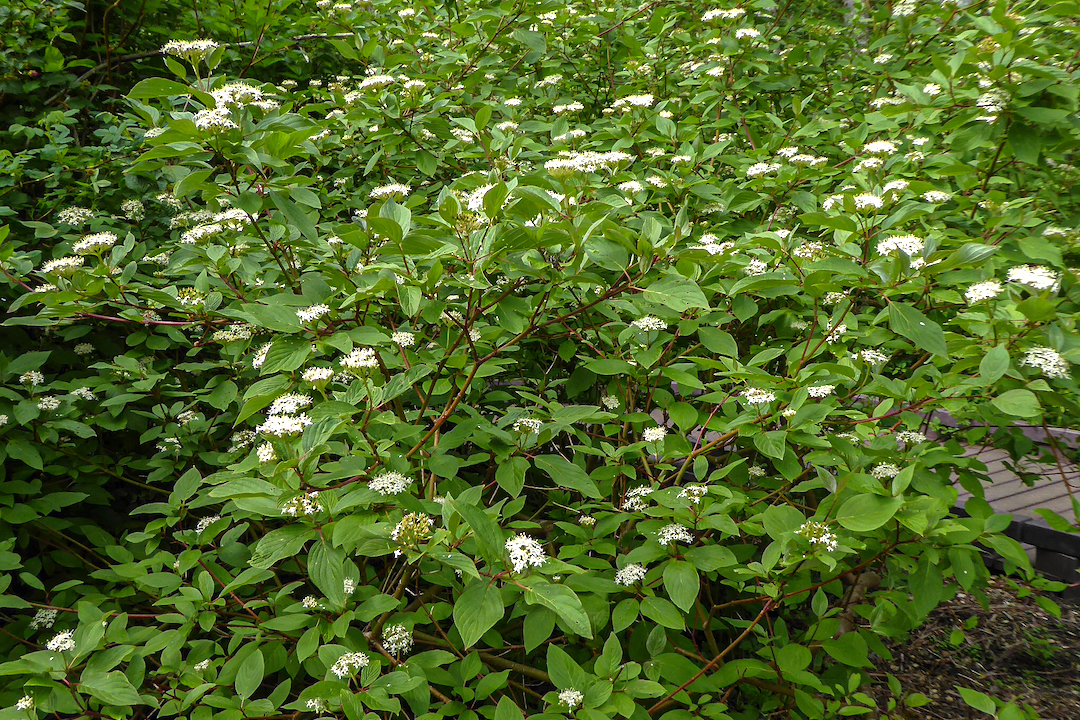
Red-osier dogwood (Cornus sericea) is a host plant for butterflies and it is typically found in riparian zones next to water. photo by Julie O’Donald
lastly, if you’re fortunate to live near a stream, pond, or wetland, these hardy shrubs do well in wetter areas
Native willows (in the genus Salix) are abundant in riparian areas throughout the Salish Sea region where they grow along the edge of streams, rivers, marshes, and lakes. Their water-loving roots bind soil along the water’s edge and help filter pollutants. Early willow flowers (catkins) are an important source of nectar and pollen for pollinators. Willows are one of the most important host plants for moths and butterflies. Not only do birds feed on the larvae, bats feed on moths that use willows as a host. Butterflies such as western tiger swallowtail, mourning cloak, and Lorquin’s admiral rely on willows as a caterpillar food plant.
Three species of native spirea can be found in Washington. Douglas spirea (Spirea douglasii), also known as hardhack, is the most common and grows in low-elevation wetlands. Spires of fluffy pink flowers attract butterflies and bumblebees, and the plants serve as a host for butterfly larvae. Douglas spirea spreads rapidly and can crowd out other vegetation, something to consider when planning for a yard or garden space.
Nature’s food chain begins with native plants. Native shrubs supply an abundance of flowers and habitat. The greater the variety of native shrubs, the more likely we are to attract a diversity of insects, birds, and wildlife.
Autumn is an excellent time to add native flowering shrubs to the landscape. Any garden can benefit from the addition of these beautiful and wildlife-friendly plants. Inviting birds and wildlife to our gardens is a satisfying way to learn about native plants and bring activity and life for viewing right outside our windows. Relax in your favorite chair with binoculars and a beverage, knowing that your garden has become a place where birds, butterflies, and pollinators will find the plants they need.
FIND OUT MORE
To learn more about gardening for wildlife and the relationships between native plants, birds, and insects visit:
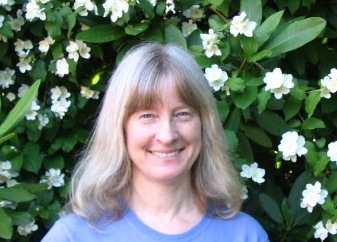
Julie O’Donald is a Community Wildlife Habitat Steward with the National Wildlife Federation. After a career in public education, Julie also volunteers in education and outreach for the Washington Native Plant Society. She gives programs and workshops that promote the use of native plants and their benefits to birds and pollinators to garden clubs and community groups. Most recently Julie has put these skills to use in creating a pollinator friendly meadow with native plants at the Northwest Stream Center in Everett.
Table of Contents, Issue #17, Autumn 2022
Mountain Lilies
By Laura Mariko Marx, Autumn 2022The white avalanche lily (Erythronium montanum) and the yellow glacier lily (Erythronium grandiflorum) are native Pacific Northwest flowers that are related, but are usually found at slightly different altitudes. The best time to see...
All Kinds of Flowers!
By Fayla Schwartz, Autumn 2022 photos by Fayla Schwartz except as notedphoto by Thomas NolandBy Fayla Schwartz, Autumn 2022 photos by Fayla Schwartz except as notedThe Salish Sea region is home to a wide variety of flowering plants. This article provides a short...
Dandelion Transformation
by John F. Williams, Autumn 2022 by John F. Williams, Autumn 2022A rugged-looking brown seed attached to a parachute glides through the air. How did that dandelion flower create dozens and dozens of these seeds? This six minute video takes a look at that...
Poetry-17
Autumn 2022 Autumn 2022All Goes Round Poem and photos by Barb Erickson Roundis the sun,seeming to rise each dayand descend each night,providing heat and light and morethan a touch of mysteryIt is roundwe are toldbut we dare not stare it in the faceto see for...
Sidewalk Wilderness
Text & photos by Sara and Thomas Noland, Autumn 2022 Queen Anne's lace.Text & photos by Sara and Thomas Noland, Autumn 2022The sidewalk is not the first place that comes to mind when thinking about habitat for plants and animals. Even discussions of “urban...
The Dandy Dandelion
By Sarah Lorse, Autumn 2022 photos by John F. Williams except as noted By Sarah Lorse, Autumn 2022 photos by John F. Williams except as notedThe dandelion is an iconic flower. It brings a burst of cheery yellow in early spring and summer seed-poofs to wish upon — a...
After the Camas
By Katherine Derbyshire, Autumn 2022Spring bloom on the prairie at Glacial Heritage Preserve near Grand Mound, Washington. photo by Thomas NolandBy Katherine Derbyshire, Autumn 2022Editor's Note: Mima Mounds near Littlerock, Washington, is one of several prairie...
PLEASE HELP SUPPORT
SALISH MAGAZINE
DONATE
Salish Magazine contains no advertising and is free. Your donation is one big way you can help us inspire people with stories about things that they can see outdoors in our Salish Sea region.
We also don't advertise Salish Magazine, so please spread the word of this online resource to your friends and colleagues.
Thanks so much for your interest and your support.
We also don't advertise Salish Magazine, so please spread the word of this online resource to your friends and colleagues.
Thanks so much for your interest and your support.


